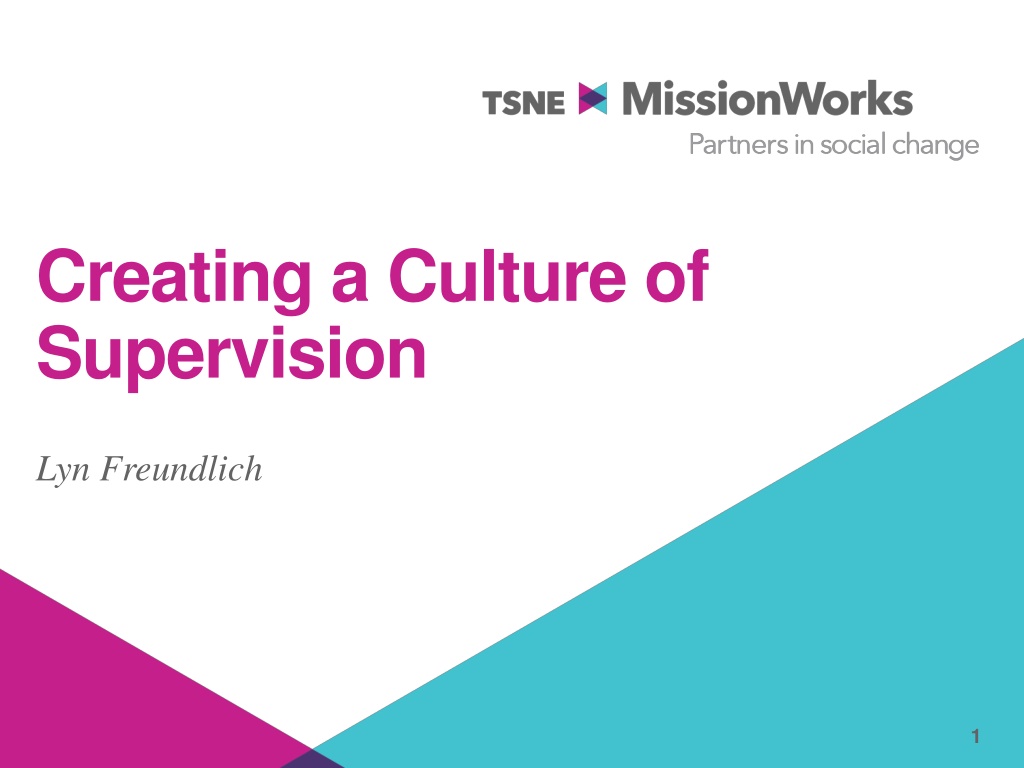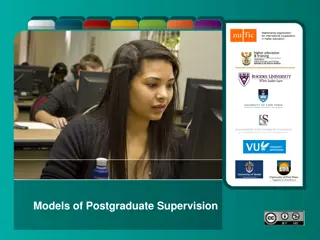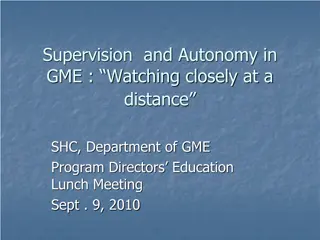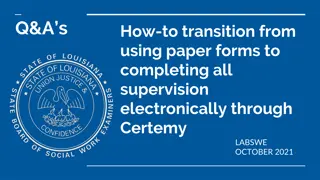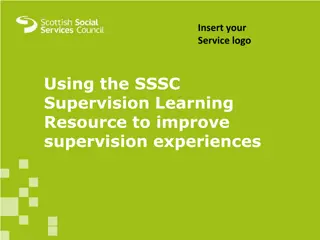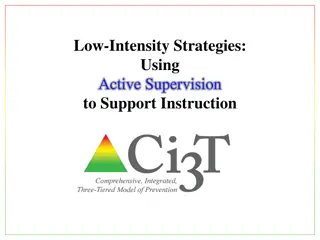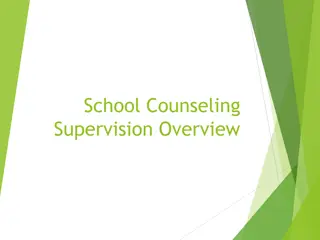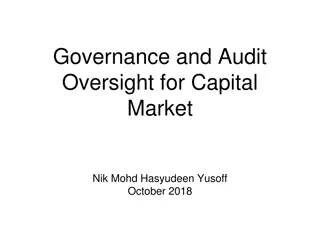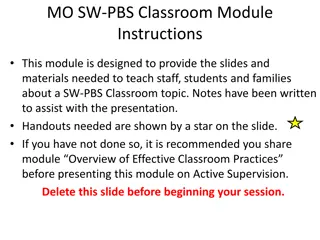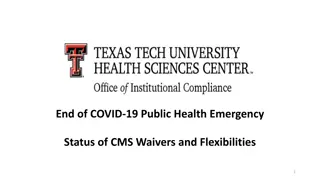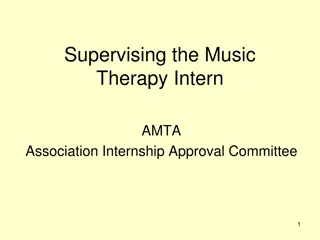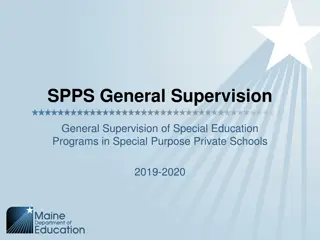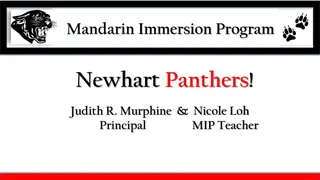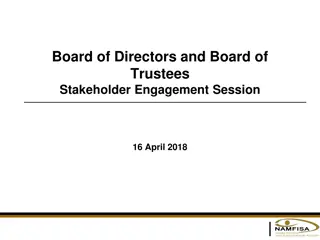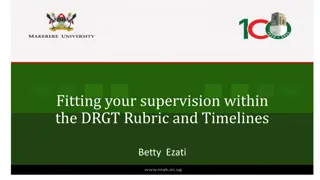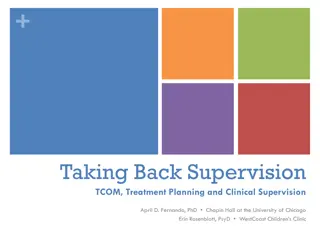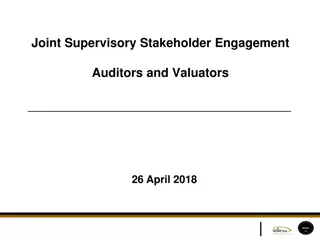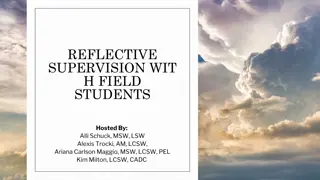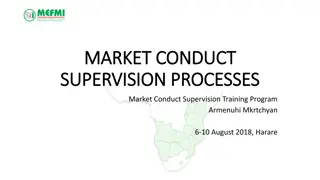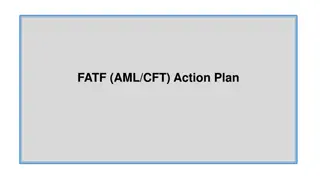Cultivating Effective Supervision in Organizations
Understanding the importance of a strong culture of supervision, overcoming barriers, and utilizing practical tools can lead to organizational success. Recognize the value of supervision, enhance communication, prevent problems, and foster professional growth through effective supervision practices.
Download Presentation

Please find below an Image/Link to download the presentation.
The content on the website is provided AS IS for your information and personal use only. It may not be sold, licensed, or shared on other websites without obtaining consent from the author. Download presentation by click this link. If you encounter any issues during the download, it is possible that the publisher has removed the file from their server.
E N D
Presentation Transcript
Creating a Culture of Supervision Lyn Freundlich 1
Learning objectives Understand how a culture of supervision contributes to organizational success Identify and address barriers to creating a strong culture of supervision Recognize characteristics of an organizational culture that values supervision Be able to use three concrete tools job description, 1:1 meetings, performance reviews TSNE MissionWorks | tsne.org 2
Best supervisor Find a partner and introduce yourself Take turns describing your best supervisor Focus on the supervisor s characteristics Also talk about the ways in which their supervision supported your success TSNE MissionWorks | tsne.org 3
Why supervision? Can have significant, magnified impact Builds trusting relationships Supports excellent communication Prevents problems Creates opportunities for professional development TSNE MissionWorks | tsne.org 4
Words matter TSNE MissionWorks | tsne.org 5
Tool # 1: Job description for supervisors Title: Hours: Supervisor Many Position Summary: Provide thoughtful and well- planned support and direction enabling staff members to successfully meet individual and programmatic goals and to contribute to the overall mission-effectiveness of your organization. TSNE MissionWorks | tsne.org 6
Essential Duties Diversity and inclusion Hiring Orientation Training and professional development Meet regularly Communication Performance management, goal setting and evaluation Reward and recognition Implementation of personnel policies TSNE MissionWorks | tsne.org 7
Supervisor job description as a tool Share widely Springboard for supervisor training Ongoing supervisor development and support Other ideas? TSNE MissionWorks | tsne.org 8
Tool # 2: One : one meetings Regularly scheduled Individual Uninterrupted Well planned for TSNE MissionWorks | tsne.org 9
Content for supervision 1. Share information 2. Check in on projects 3. Talk about work relationships 4. Explore upcoming work 5. Consider training and professional development needs 6. Discuss supervisor relationship TSNE MissionWorks | tsne.org 10
What gets in the way? Find a different partner Introduce yourselves Answer the following questions: 1. In your workplace, is there an organizational expectation that supervisors and staff meet regularly? 2. If so how is that conveyed? how consistently do those meetings happen? If not why not? what steps could you take to create this expectation and support the practice? TSNE MissionWorks | tsne.org 11
What about time? TSNE MissionWorks | tsne.org 12
Tool #3: Performance reviews for supervisors Tied to job description for supervisors Includes reflective and staff feedback pieces Use a rating system if that is part of your culture; but Be sure to include space for examples and comments TSNE MissionWorks | tsne.org 13
Other practices How does your organization create or support a culture that places a high value on supervision? What are the barriers to creating a culture of supervision? TSNE MissionWorks | tsne.org 14
Thank you! LynFreundlich lfreundlich@tsne.org 15
